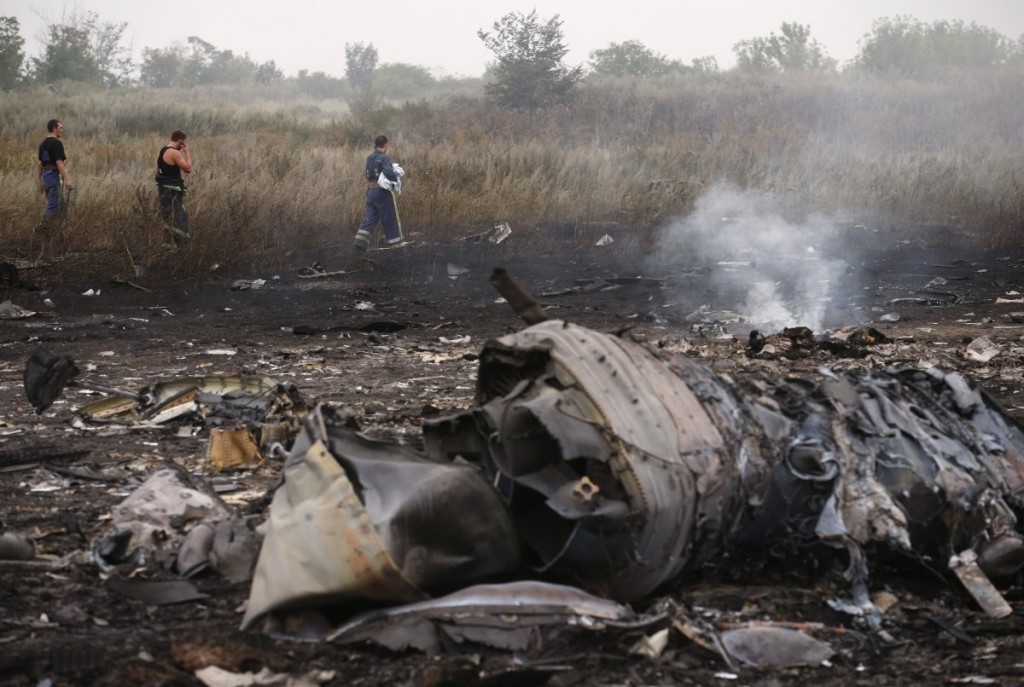If you’re like me, you won’t be able to erase the mental image of seeing a dead woman’s corpse on Thursday.![]()
![]()
Like it or not, that will be, for me and for many millions more, the indelible image of the tragic and horrific attack on Malaysia Airlines 17 on Thursday, her black skirt, her bare feet, the corpse of a man in a green short-sleeved shirt lying beside her. It’s a moment when anyone who has ever flown internationally felt a sinking feeling in his or her gut. It reminded me of my first trip to Latin America, which took us through Cuban airspace, something I found inordinately odd, given the absolute lack of cooperation between the U.S. and Cuban governments otherwise.
The world is now holding its collective judgment over the issue of whether Ukraine, Ukrainian dissidents or Russian officials share more blame for the attack on Malaysia Airlines 17. (Plenty of us have our guesses, and the Kremlin’s defensiveness in the hours following the attack speaks volumes). But in many ways, it doesn’t matter. If Russia is at fault, you can be sure Vladimir Putin will stonewall the investigation as much as possible. That doesn’t change the fundamentals that Putin must now make the peace.
Putin has, for some time, realized that he needs to be working with, and not against, Ukraine’s new president, Petro Poroshenko, to bring eastern Ukraine to peace. That doesn’t mean that Putin will end his campaign of political dirty tricks in Ukraine. But since mid-May, when Putin distanced himself from the Donetsk and Luhansk referenda, thereby refusing to envelop eastern Ukraine in the same way as Crimea, the Kremlin has increasingly avowed responsibility for the separatist campaign that it tacitly encouraged in March and April. Putin further recognized Poroshenko’s election and, while Ukrainian-Russian relations might still be strained, they’re less tense than they were before May 25. We don’t know, and we might never know, whether the separatists gained anti-aircraft missiles from Moscow or simply took them over from eastern Ukraine army installations, but Putin now has an imperative to shut down the separatists and work with Poroshenko to secure eastern Ukraine. It does Putin no favors to have civilian aircraft shot out of the sky a spit’s throw away from the Russian border.
We still don’t know how many U.S. citizens were aboard the flight, but there are estimates of 25 or so. When was the last time that 25 American citizens died in a terrorist attack? Who, before Thursday, thought that it could happen over eastern Ukraine’s skies, for all of the FAA warnings? The Middle East, east Africa maybe, but not Europe.
As has been true since former Ukrainian president Viktor Yanukovych ordered fire on civilian protesters in Kiev in February, a European country is going through more lethal conflict than at any time since Yugoslavia’s brutal civil war.
Accordingly, Malaysia Airlines Flight 17 could bring Poroshenko and Putin, finally, on the same page. If 25 U.S. citizens were indeed on board, Putin is going to face hell from US president Barack Obama, and probably from the rest of the United Nations Security Council, including the typically ambivalent China. But certainly, the dozens of dead Dutch citizens will also anger prime minister Mark Rutte, an ally of German chancellor Angela Merkel. As angry as the Obama administration must be, Thursday’s civil aviation disaster is now a direct threat to European civilian security, a game-changer in Brussels, Berlin and Amsterdam.
Though he can avoid culpability, Putin certainly can’t ignore this. Poroshenko, literally days after signing an association agreement with the European Union, can’t either. Though the next few days will almost certainly involve a lot of diplomatic smoke, the macabre, silver lining of Malaysia Airlines Flight 17 is that it may hasten more stability in eastern Ukraine, uniting Poroshenko and Putin in the cause of avoiding another similar horror.


